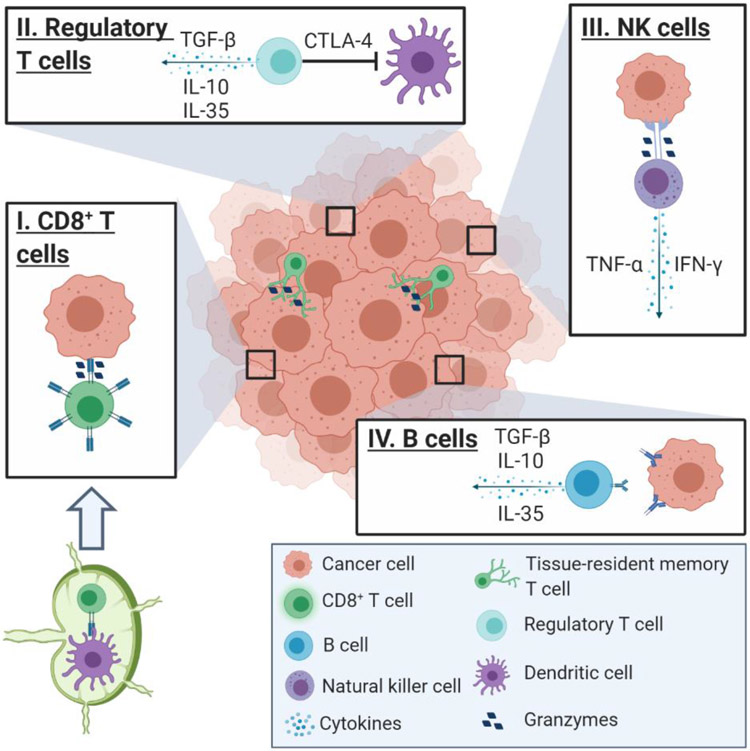Fig. 1.
Tumor-infiltrating lymphocyte subsets in the tumor microenvironment (TME). (I) Naïve CD8+ T cells become activated upon binding to antigen-presenting dendritic cells (DCs) in the lymph nodes. Once activated, CD8+ effector T cells recognize and bind to tumor cells, inducing apoptosis via granzyme release. (II) Regulatory T cells inhibit the antitumor immune response by secreting immunosuppressive cytokines and restricting the activity of DCs by the binding of CTLA-4 to CD80/86 on DCs. (III) NK cells recognize tumor cells as ‘non-self’ and bind to induce apoptosis by releasing granzymes into the cell, as well as secrete immunostimulatory cytokines that recruit CD8+ effector T cells into the TME. (IV) B cells secrete tumor antigen-specific IgG antibodies that lead to apoptosis upon binding to the tumor, but B cells can also secrete immunosuppressive cytokines like TGF-β, IL-10, and IL-35 that promote tumor growth. Figure not drawn to scale. Created with BioRender.com

